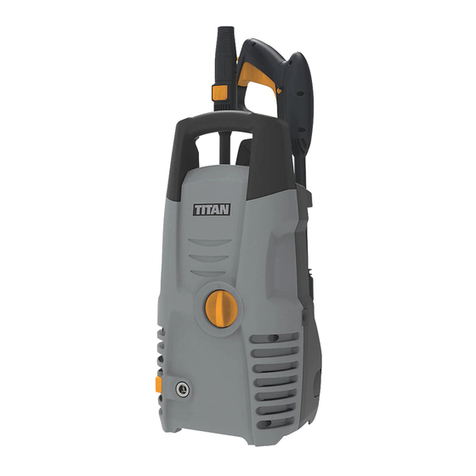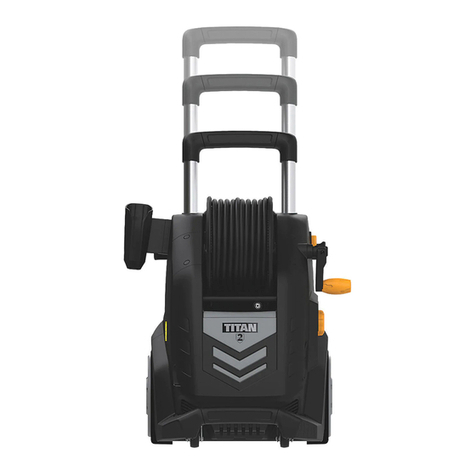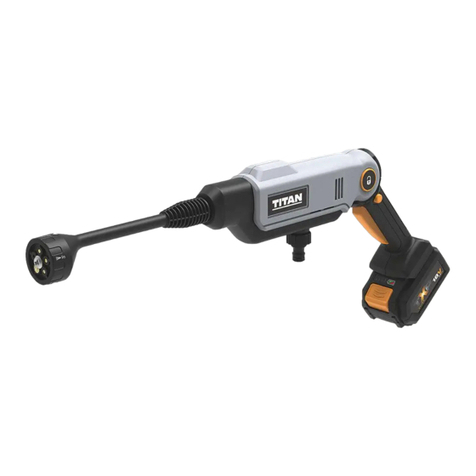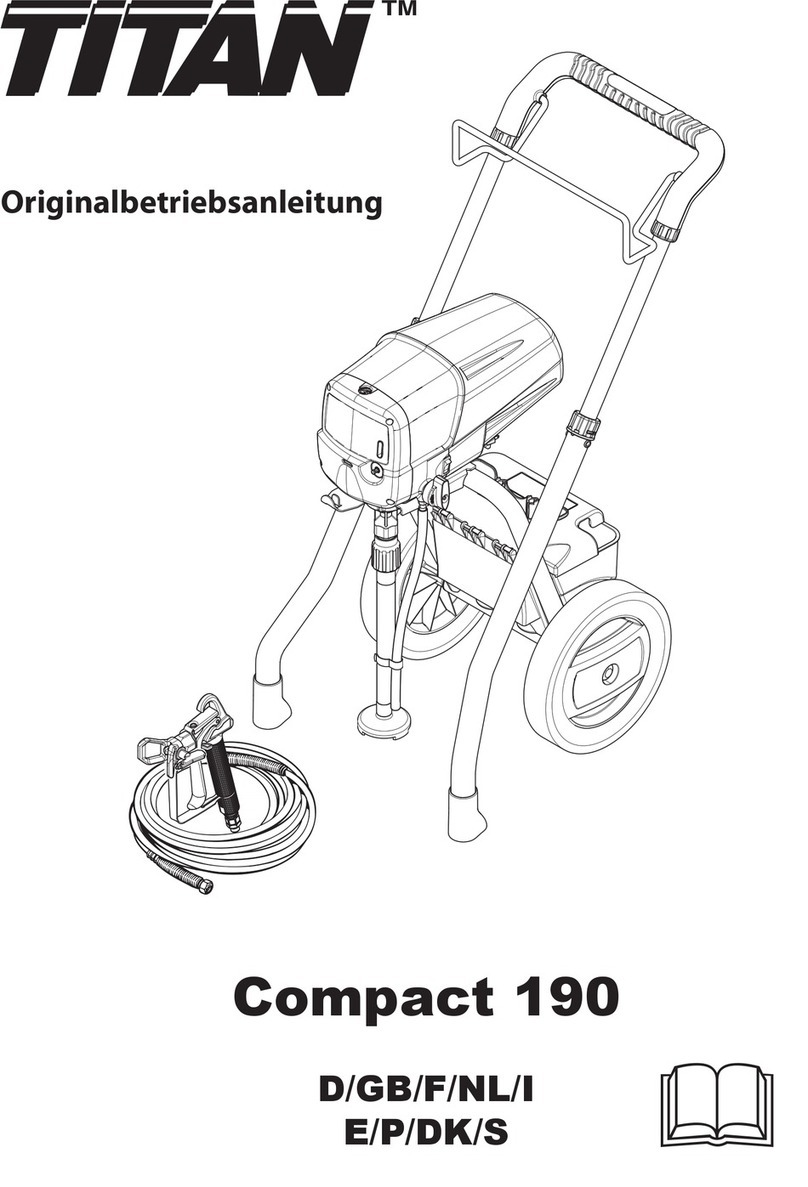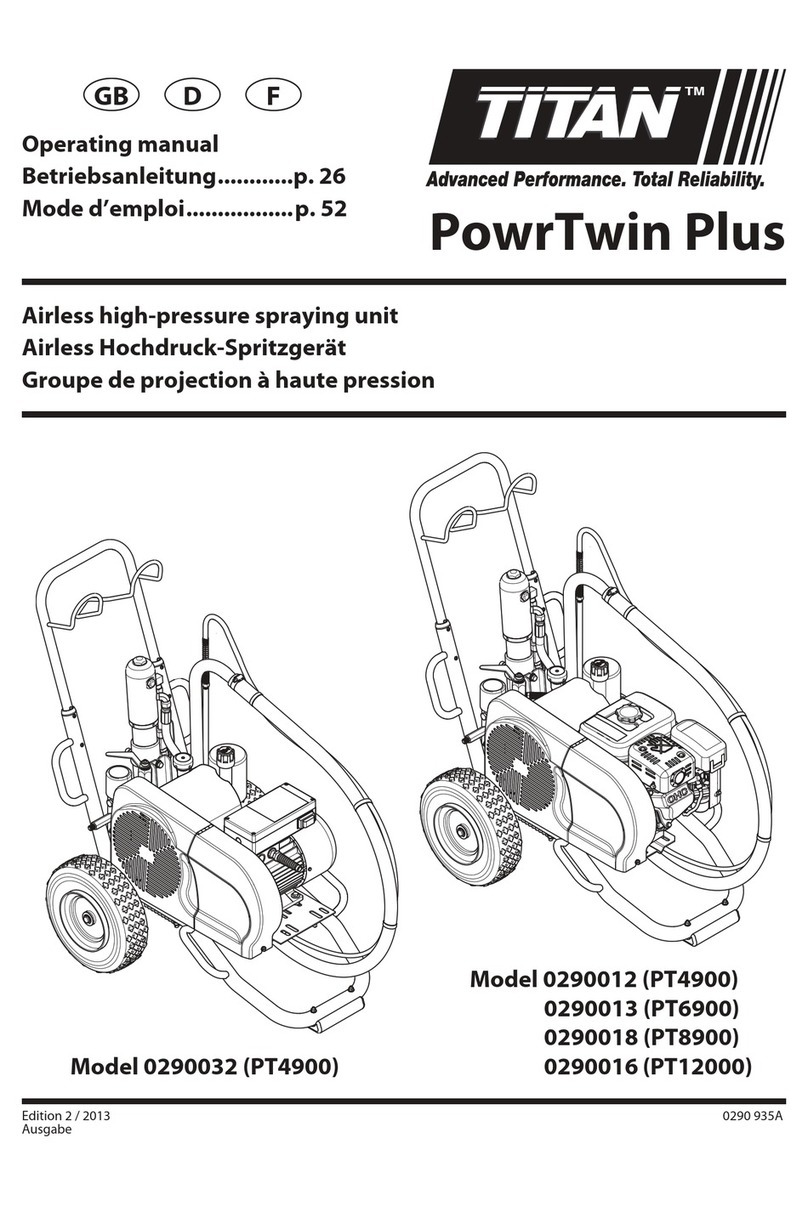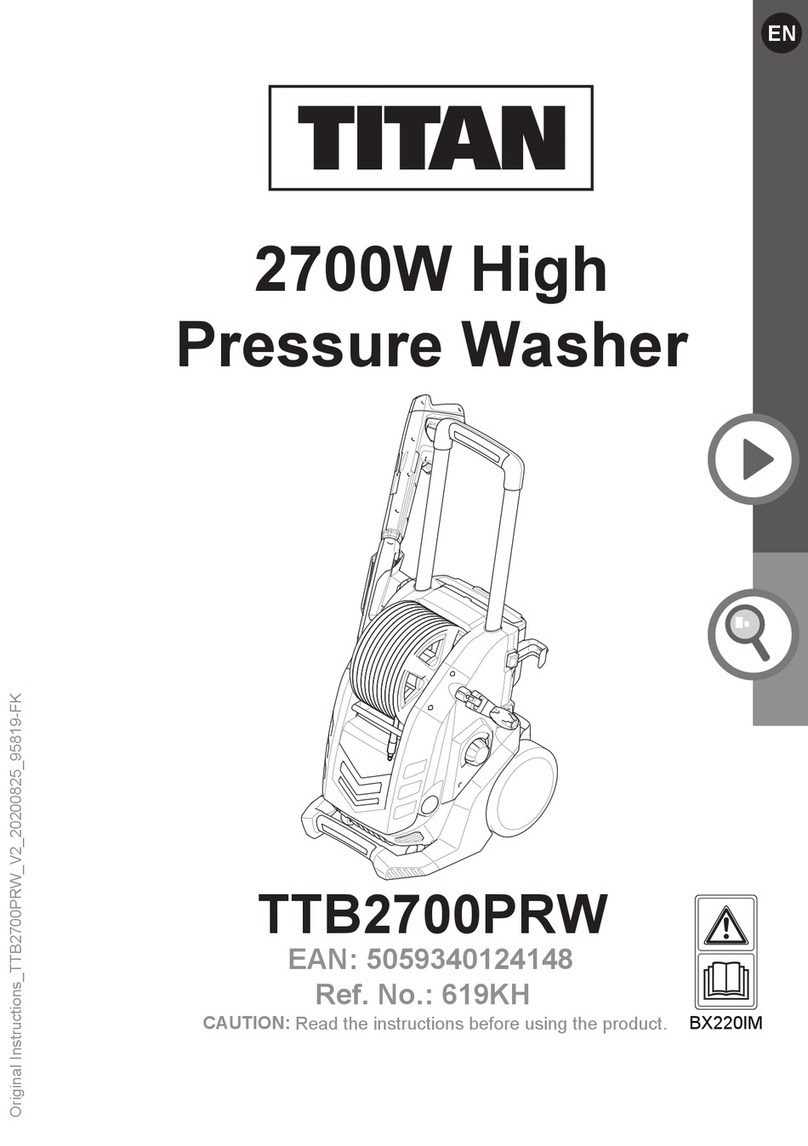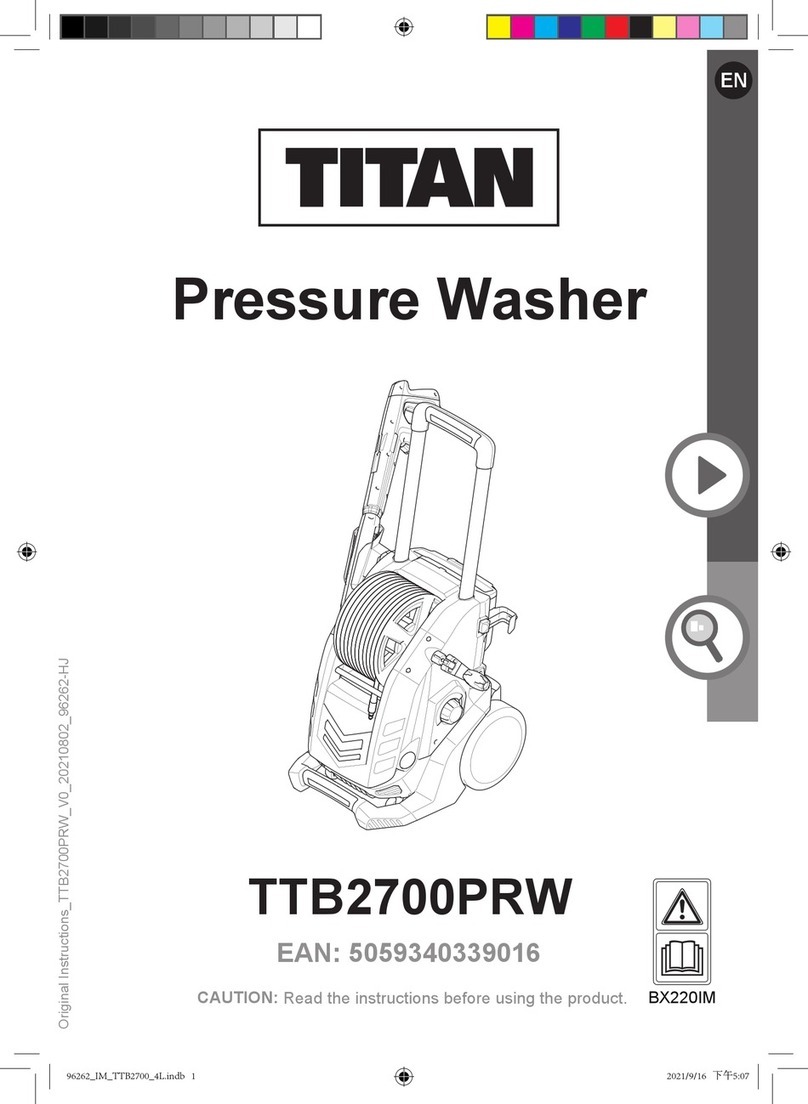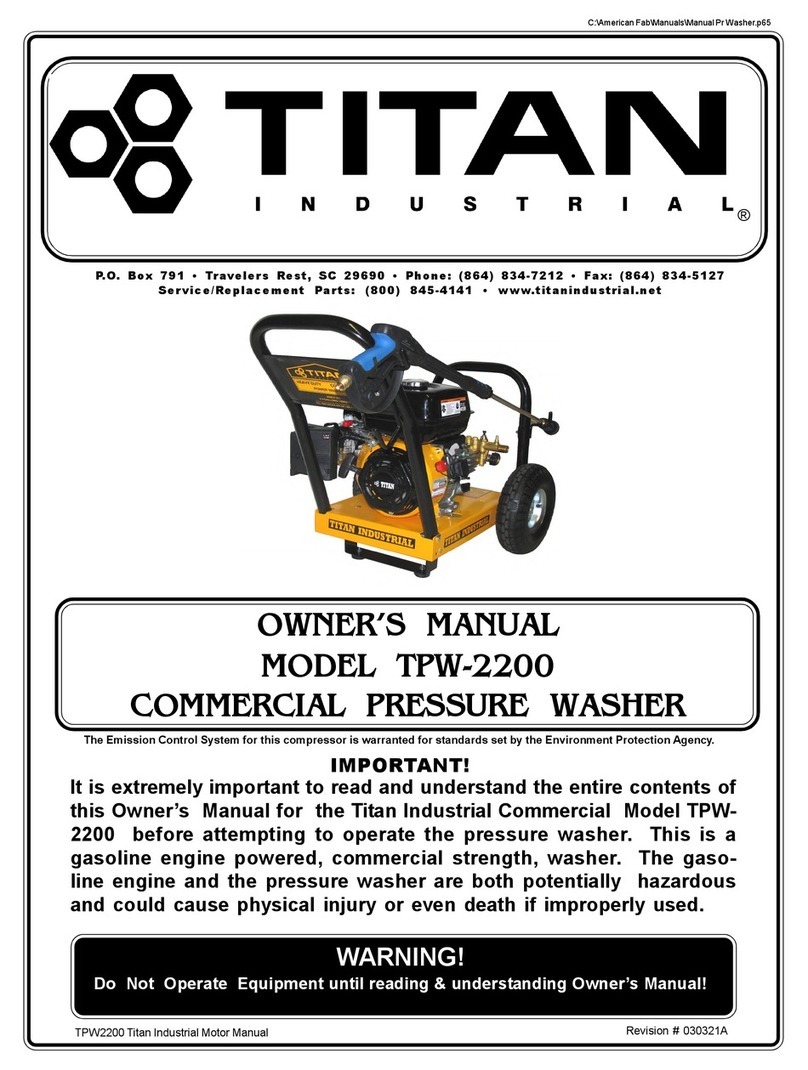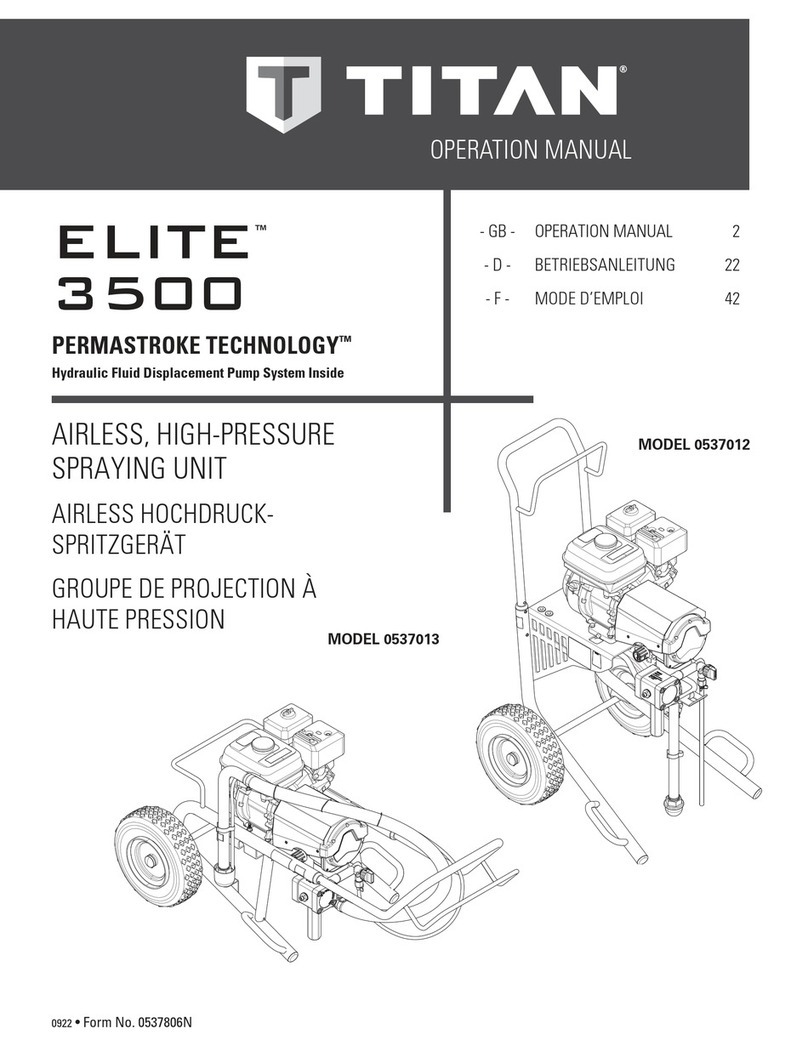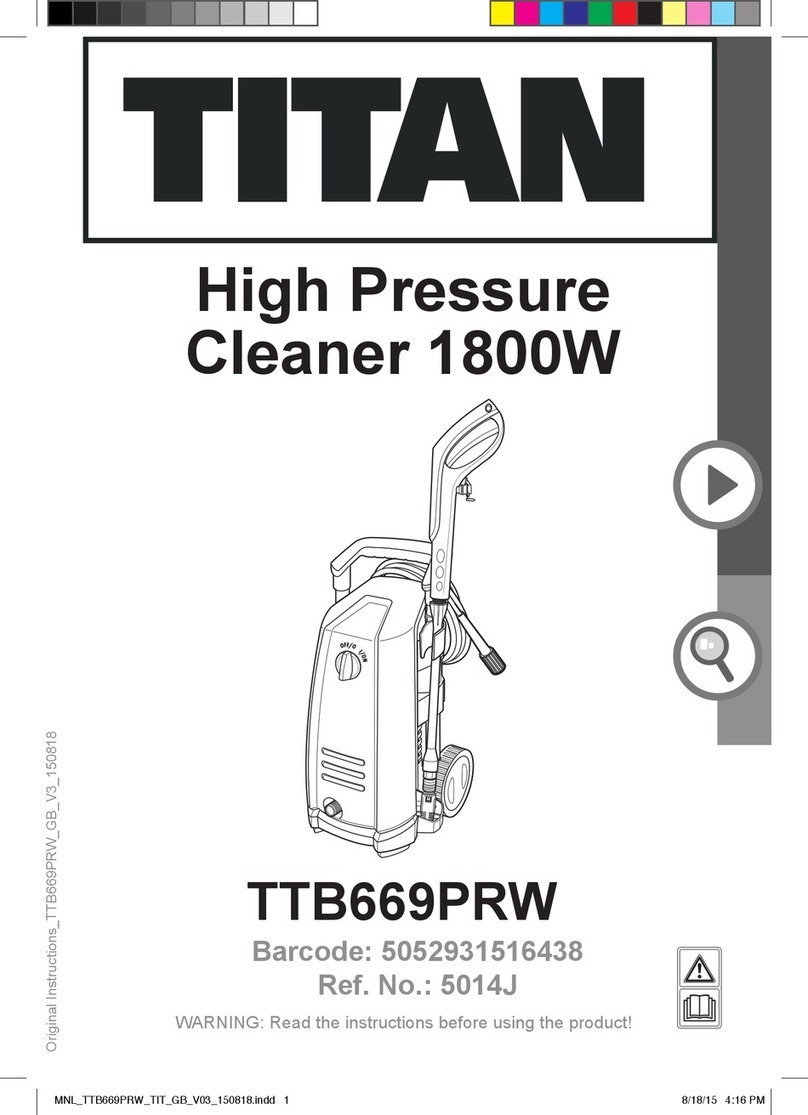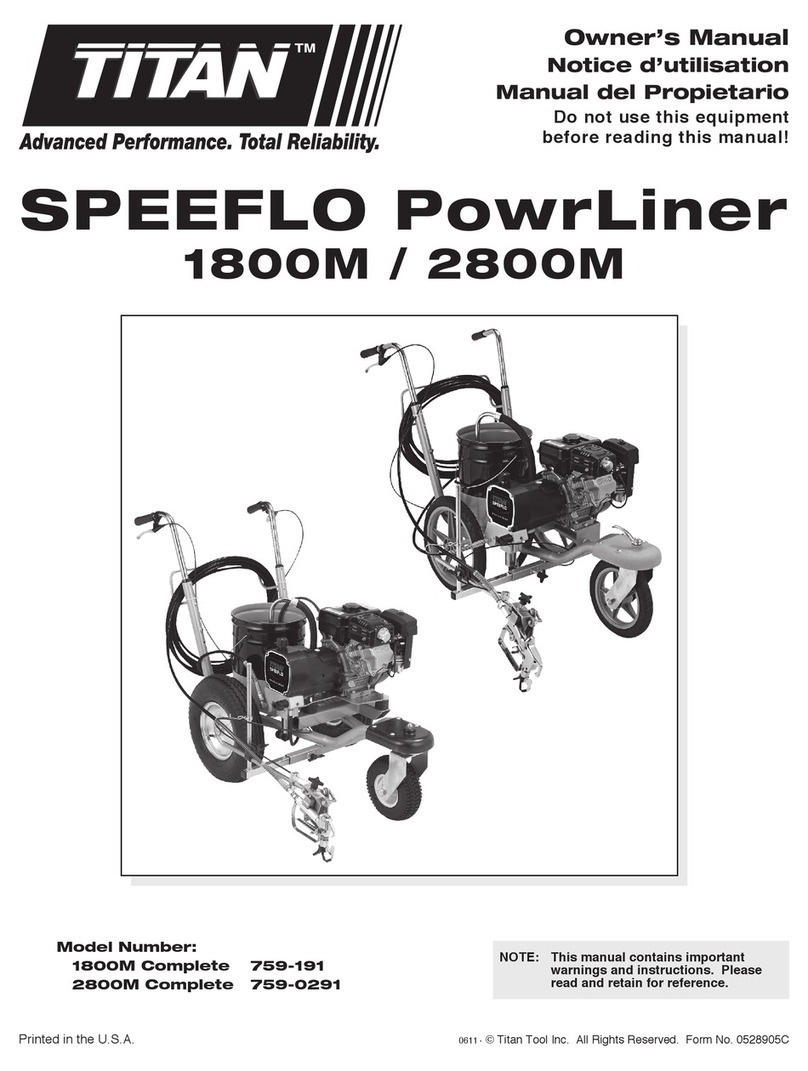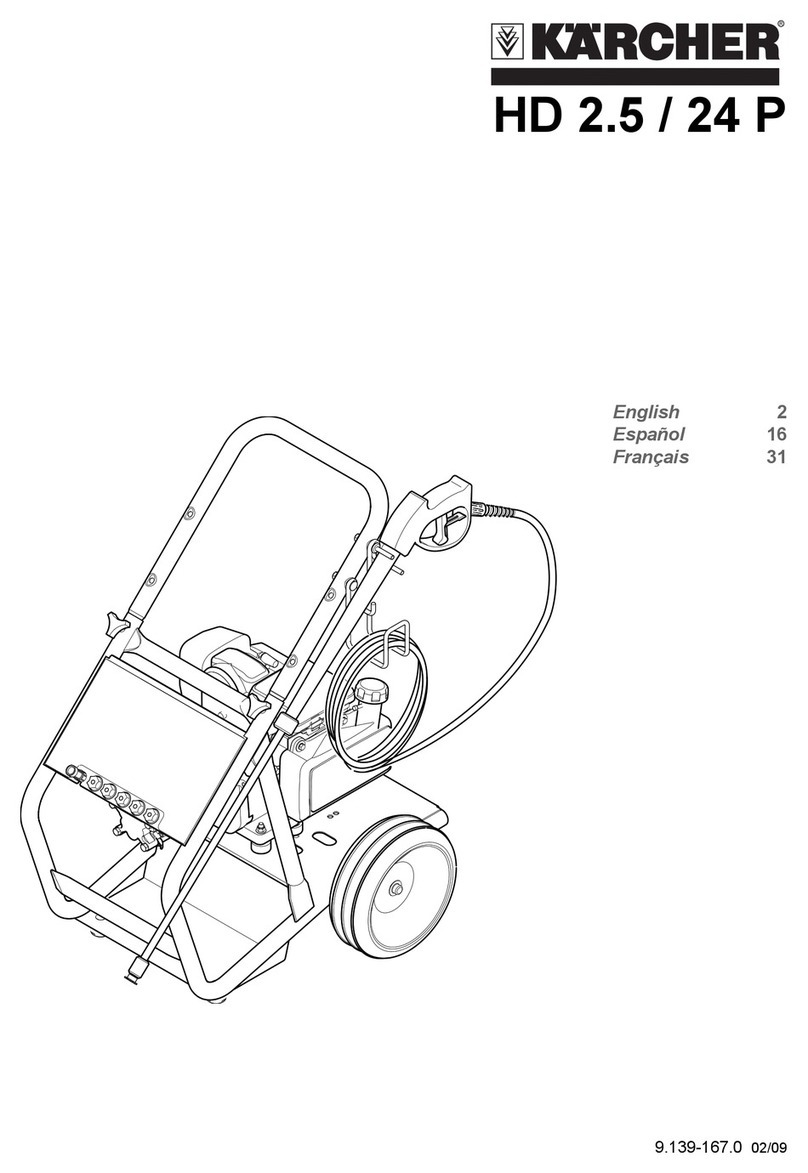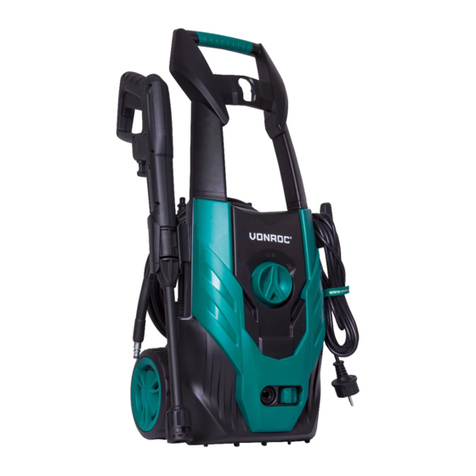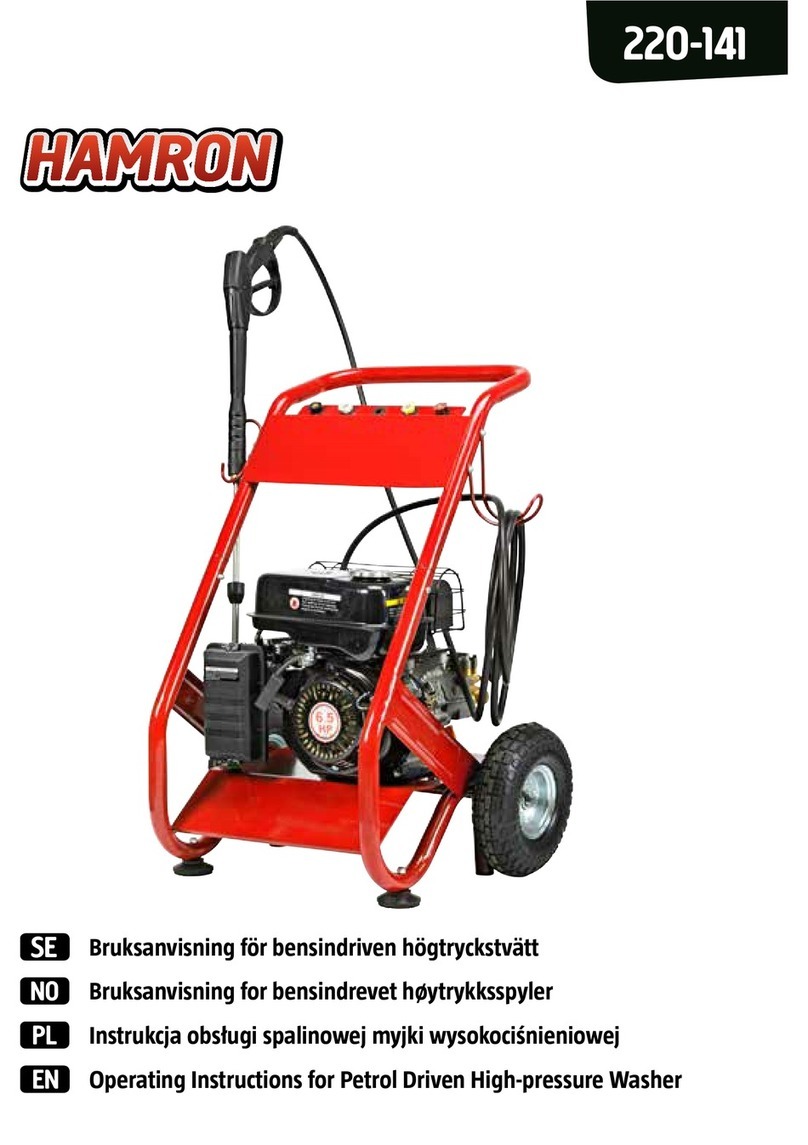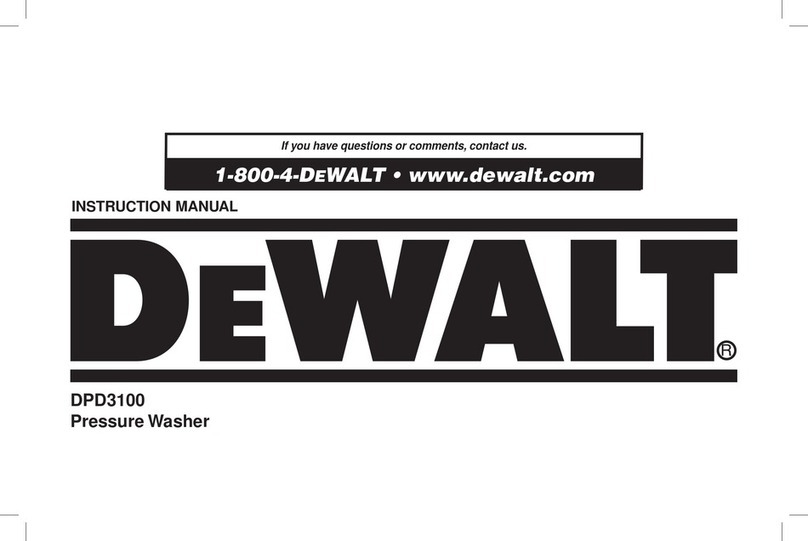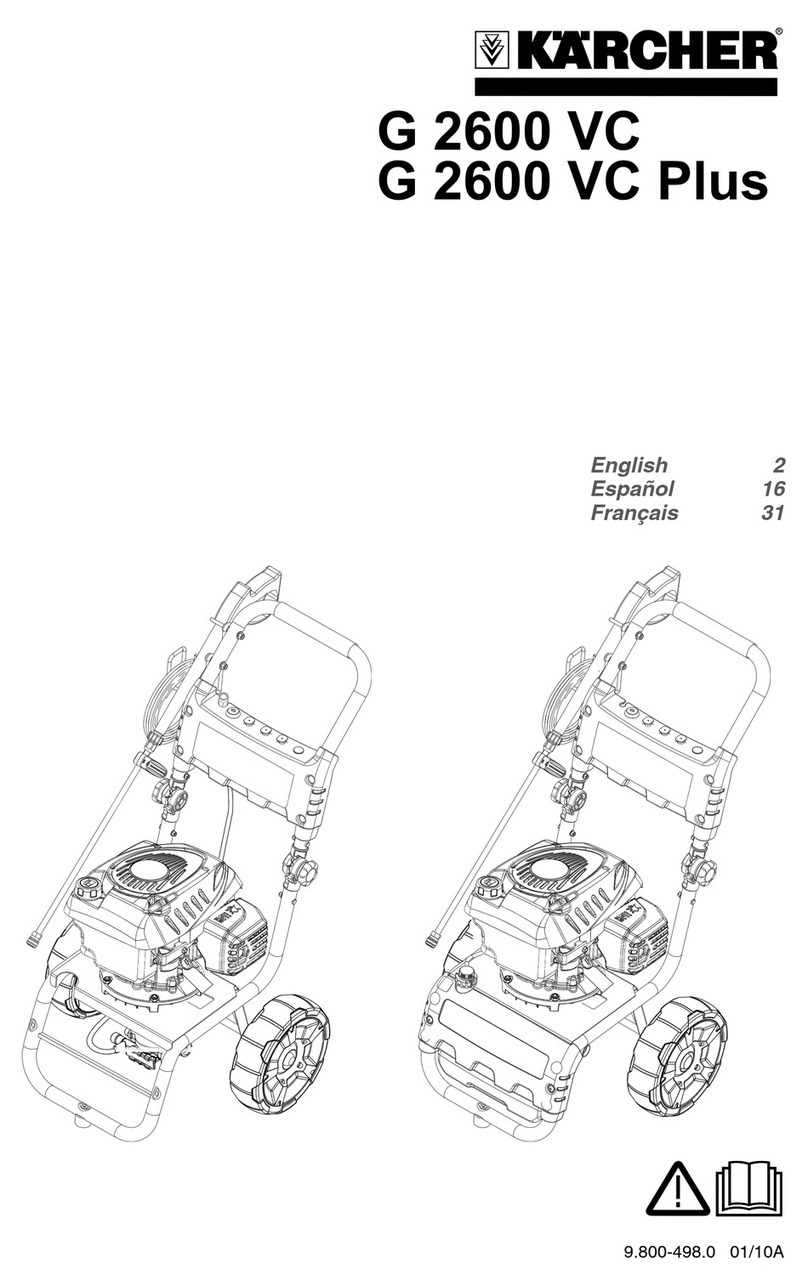
2©Titan Tool Inc. All rights reserved.
PISTON SEAL LUBRICANT
Specially formulated to prevent materi-
als from adhering to the piston rod,
which becomes abrasive to the upper
seals. Piston Lube will break down
any material that may accumulate in
the wet cup and keep it from drying.
8 oz individual........................700-925
1 qt individual.........................700-926
8 oz, case of 12 .....................700-911
1 qt, case of 12.....................700-912
AIRLESS HOSE
I.D.x Length Part #
1/4" x 50'..............................316-505
3/8" x 50'..............................690-375-50
3/16" x 3'..............................550-220
3/16" x 9'..............................550-222
3/16" x 15'............................550-221
HIGH PRESSURE SWIVELS
Pressure Rated at 5000 psi
Gun-to-Hose
1/4” NPS (F) x 1/4” NPS (M).....500-428
Hose-to-Hose
1/4” NPS (M) x 1/4” NPS(M) ....500-424
FITTINGS
Description Part #
1/4" x 1/4" Hose Coupling.........490-012
1/4" x 3/8" Hose Coupling.........490-016
3/8" x 3/8" Hose Coupling.........490-014
T-Fittings 1/4" x 1/4" .................490-036
Gun Manifold ............................500-056
Tip Filter Retainer .....................520-046
1/4" Mx1/4"F Swivel Union .......490-005
1/4" Mx3/8"F Swivel Union .......490-032
Retaining Nut Adapter ..............490-007
High Pressure Fl. Gauge ..........730-394
Parts Drawings and
Repair Information..........................15-25
Frame Assembly..............................15
Replacement Labels........................16
Engine Assembly.............................18
Maintenance ....................................19
Gear Box Assembly.........................20
Clutch Rotor & Gear Repair ............21
ON/OFF Switch................................21
Filter Block Assembly ......................22
Pressure Switch...............................23
Prime Relief Valve ...........................23
Filter Replacement...........................23
Fluid Section Assembly ...................24
Syphon Assembly............................24
Pump Repair....................................25
Equipment Job History.........................26
Specifications.......................................27
Warranty ..............................................28
Table of Contents
Accessories ............................................2
General Repairs/Service ........................3
Maintenance/Service Record .................4
Warnings ................................................5
Aviso (En Español).................................6
Attention (En Français) ..........................7
Notice: Fire or Explosion Hazards ...8–10
Start-up Procedure ...............................11
Application Techniques ........................12
Cleaning Procedure..............................13
Flushing Specifications.........................14
Airless Tip Selection.............................13
Troubleshooting..............................13–14
Airless Gun .......................................13
Spray Pattern....................................13
Airless Pump.....................................14
Accessories
LIQUID SHIELD
Cleans and protects spray systems
against rust, corrosion and premature
wear.
Case of 12 (1 quart bottles) ...700-888
1 quart ....................................700-889
WARNING: The Engine Exhaust
from this product contains chemicals
known to the State of California to
cause cancer, birth defects, or other
reproductive harm.
U.S. Patents: 3,936,002; 4,220,286;
4,457,472; 4,508,268; 4,494,697;
4,500,119; 4,626,004; 4,611,758;
4,744,571; 4,728,213; 4,768,932;
4,755,638; 4,768,929; 4,840,543;
4,908,538; 5,074,467; 5,425,506

